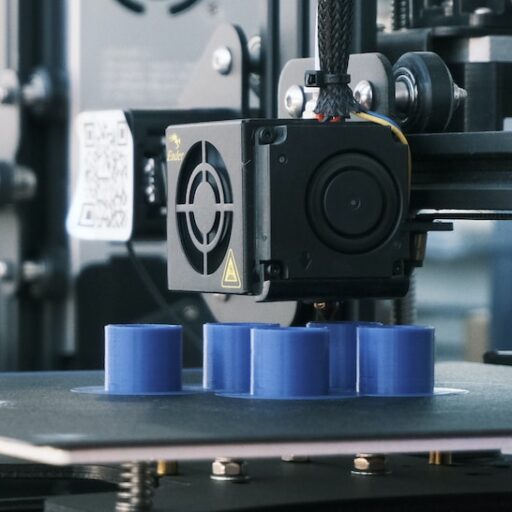Support our educational content for free when you purchase through links on our site. Learn more
How Many 3D Printers Have Been Sold [2023]

Have you ever wondered how many 3D printers have been sold worldwide? The 3D printing market has been growing rapidly in recent years, with more and more people embracing this innovative technology. In this article, we will explore the current state of the 3D printing market and provide you with some interesting facts and figures. So, let’s dive in!
Table of Contents
- Quick Answer
- Quick Tips and Facts
- Background
- History of 3D Printing
- The Global 3D Printing Market
- Key Players in the Industry
- Future Directions of 3D Printing
- FAQ
- Conclusion
- Recommended Links
- Reference Links
Quick Answer
As of 2021, approximately 2.2 million units of 3D printers were shipped worldwide. However, this number is expected to grow significantly in the coming years. By 2030, it is projected that 21.5 million units of 3D printers will be sold globally.
Quick Tips and Facts
- The global 3D printing market was valued at $13.84 billion in 2021 and is predicted to reach $76.17 billion by 2030, growing at a CAGR of 20.8% from 2022 to 2030.
- North America currently holds the largest share of the global market in terms of revenue, followed by Europe.
- Asia Pacific is expected to have the highest CAGR over the next decade, driven by the rapid adoption of 3D printing in manufacturing.
- Key players in the industry include Stratasys, Ltd., Materialis, EnvisionTec, Inc., 3D Systems, Inc., GE Additive, Autodesk Inc., Made In Space, Canon Inc., and Voxeljet AG.
Background
3D printing, also known as additive manufacturing, is a revolutionary technology that allows the creation of three-dimensional objects by layering materials on top of each other. It has gained popularity in various industries, including aerospace, automotive, healthcare, and consumer products.
History of 3D Printing
The concept of 3D printing dates back to the 1980s when Charles Hull invented stereolithography, a process that uses a laser to solidify liquid resin layer by layer. Since then, 3D printing technology has evolved significantly, with new materials and techniques being developed.
The Global 3D Printing Market
The global 3D printing market has been experiencing rapid growth in recent years. According to a report by AZoM.com, the market was valued at $13.84 billion in 2021 and is expected to reach $76.17 billion by 2030, growing at a CAGR of 20.8% from 2022 to 2030[1].
The increasing adoption of 3D printing in various industries, such as aerospace, automotive, and healthcare, is driving the market’s growth. 3D printing offers numerous benefits, including cost savings, faster production times, and the ability to create complex geometries that are not possible with traditional manufacturing methods.
Key Players in the Industry
Several companies are leading the way in the 3D printing industry. These key players have developed advanced technologies and innovative solutions to meet the growing demand for 3D printers and related services. Some of the prominent players in the industry include:
- Stratasys, Ltd.
- Materialis
- EnvisionTec, Inc.
- 3D Systems, Inc.
- GE Additive
- Autodesk Inc.
- Made In Space
- Canon Inc.
- Voxeljet AG
These companies offer a wide range of 3D printers, materials, and software solutions to cater to different needs and applications.
Future Directions of 3D Printing
The future of 3D printing looks promising, with new advancements and applications on the horizon. Here are some key trends and developments to watch out for:
-
Metal 3D Printing: Metal 3D printing is gaining traction in industries such as aerospace, automotive, and healthcare. It allows the production of complex metal parts with high precision and strength.
-
Bioprinting: Bioprinting is an emerging field that aims to create living tissues and organs using 3D printing technology. This has the potential to revolutionize healthcare by enabling personalized medicine and organ transplantation.
-
Large-Scale 3D Printing: As the technology advances, we can expect to see more large-scale 3D printing projects, such as building construction and infrastructure development.
-
Improved Materials: Researchers are constantly developing new materials for 3D printing, including biodegradable plastics, conductive inks, and advanced composites. These materials will expand the range of applications for 3D printing.
FAQ

How big is the 3D printing market?
The global 3D printing market was valued at $13.84 billion in 2021[^1]. However, it is projected to reach $76.17 billion by 2030, growing at a CAGR of 20.8% from 2022 to 2030.
Read more about “3D Printing Market Size …: A Comprehensive Guide”
How many people in the world have 3D printers?
As of 2021, approximately 2.2 million units of 3D printers were shipped worldwide[^1]. This number is expected to increase significantly in the coming years, with a projected 21.5 million units of 3D printers to be sold by 2030.
Is 3D printing still profitable?
Yes, 3D printing can be a profitable business. The technology offers numerous advantages, including cost savings, faster production times, and the ability to create customized products. However, like any business, success in 3D printing requires careful planning, market research, and a solid business strategy.
How many Americans own a 3D printer?
The exact number of Americans who own a 3D printer is difficult to determine. However, according to a survey conducted by Statista in 2020, around 8% of respondents in the United States reported owning a 3D printer[2]. This number is expected to increase as the technology becomes more accessible and affordable.
Conclusion
The 3D printing market has been growing rapidly, with millions of 3D printers being sold worldwide. The technology offers numerous benefits and has the potential to revolutionize various industries. As we look to the future, we can expect to see further advancements in 3D printing technology, including metal printing, bioprinting, and large-scale applications.
If you’re interested in exploring the world of 3D printing further, check out our Beginner’s Guides for helpful tips and tutorials. You can also browse our 3D Printable Objects category for exciting projects to try out.
Recommended Links
- CHECK PRICE on: 3D Printers on Amazon
- Shop Stratasys on: Stratasys Official Website
- Shop Materialis on: Materialis Official Website
- Shop EnvisionTec on: EnvisionTec Official Website
- Shop 3D Systems on: 3D Systems Official Website
- Shop GE Additive on: GE Additive Official Website
- Shop Autodesk on: Autodesk Official Website
- Shop Canon on: Canon Official Website
- Shop Voxeljet on: Voxeljet Official Website
Reference Links
[^1]: The Global 3D Printing Market – Growth, Trends … – AZoM.com
[^2]: Statista – Ownership of 3D printers in the United States in 2020


